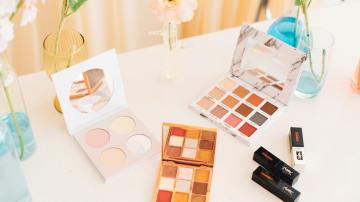After weeks of uncertainty and volatility, the Trump administration announced a surprise agreement with the Chinese government Monday morning, lowering tariff rates from a high of 145% down to 30% and pausing them for 90 days. A permanent deal has not been reached, and this agreement was acknowledged by both parties as a temporary peace.
It’s a welcome relief for fashion brands that were panicking at the thought of having to eat the 145% tariff rate. But a number of brands Glossy spoke with characterized the announcement as clearly a stopgap measure. After dealing with weeks of mixed messages and frequent policy changes from the government, brands are wary to accept any new announcement at face value.
“This new ‘truce’ is welcome breathing space but not a green light to change direction,” said Ira Lysa, CEO of New Jersey-based tailoring company Imperial Alterations. “The uncertainty has rattled corporate confidence.”
Many brands have spent the last few months diligently exploring new manufacturing options, traveling to countries like Vietnam, Sri Lanka and Cambodia to set up new factory relationships. While those countries are also hit with tariffs, none had a higher rate than China. Now with the new truce, many brands are reconsidering those moves. China has such a wide variety of manufacturing capabilities and the benefit of economies of scale that even with a higher tariff rate than other countries, it can still be the ideal manufacturing location.
“In January, we traveled to Vietnam and Sri Lanka to see about moving manufacturing, and we’ve invested a lot of money into these areas,” said Kim Vaccarella, founder and CEO of the bag brand Bogg. “Now with the new truce, it looks like China is back to being the best option.”
Vaccarella said Bogg immediately reinstated production in China, though it is continuing forward with its new manufacturing partners in Vietnam and Sri Lanka, as well. That’s both because Bogg has already invested time and money in them to diversify so the brand is less vulnerable to more volatility in the future.
Since March, Bogg has cut 45 SKUs from its fall catalogue and brought in as much product from China to a U.S. warehouse as it could afford in anticipation of the 145% tariffs. It has also been paying an extra 25% to keep its product from China in bonded storage — a special type of warehouse in the importing country where duties are only charged once the product leaves the warehouse. Vaccarella said that even with the relief and lowered tariffs, the unpredictability of the last few months has made it hard to make informed decisions.
Like Vaccarella, Joosep Seitam has also made immediate changes. As the co-founder of the New York-based jewelry company Icecartel, Seitam has raised prices on 10% of all SKUs, but he paused the price increase in light of Monday’s truce.
“A 30% tariff is obviously better than 145%, but it’s still far too high for us,” he said. “Each additional dollar in tariffs tightens our margins, and we’re not a big company with deep pockets. We can just about make do with it for now by tweaking our ad spend, but any tariff hurts small brands like us.”
Both Vaccarella and Seitam expressed deep skepticism that good news today won’t be followed by bad news tomorrow.
“I don’t feel confident at all that it will hold,” Vaccarella said.
Bogg has over 100 employees now and did over $100 million in revenue in 2024. But smaller brands will have a much harder time making sudden changes, absorbing unexpected cost increases and diversifying in the way Bogg has.
“I do not believe this truce will hold,” Seitam said. “Trump’s been switching policies left and right, and China’s not going to be slow to retaliate. We’re keeping our supply chain flexible, having standby factories available in Thailand. The uncertainty makes it hard to commit to long-term contracts, so we’re employing short-term contracts.”




